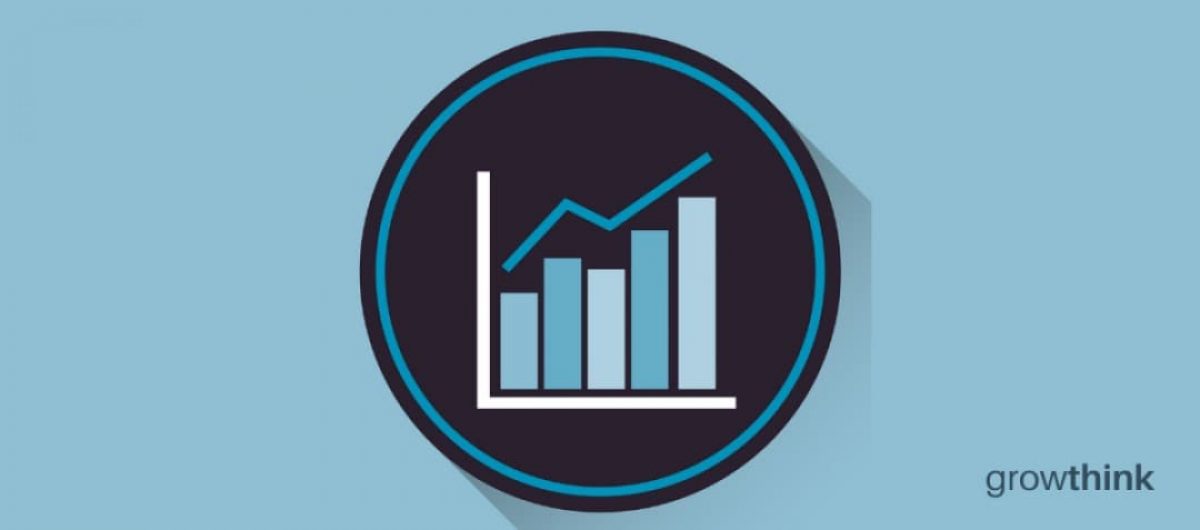Financial projections, also known as financial models, are forecasts of your company’s expected financial performance, typically over the next 5 years.
Over the past 25+ years, we’ve created financial projections for thousands of startups and existing businesses. In doing so, we’ve found 3 key reasons why financial projections are important:
- They help you determine the viability of your new business ideas and/or your need to make modifications to them. For instance, if your initial financial projections show your business idea isn’t profitable, you’ll know that changes are needed (e.g., raising prices, serving new markets, figuring out how to reduce costs, etc.) to make it viable.
- They are crucial for raising funding. Lenders will always review your financial projections to ensure you can comfortably repay any loans they issue you. Equity investors will nearly always review your projections in determining whether they can achieve their desired return on their investment in your business.
- They help keep your business financially on track by giving you goals. For instance, if your financial projections state your company should generate 100 new clients this year, and the year is halfway done and you’re only at 30 clients, you’ll know you need to readjust your strategy to achieve your goals.
In the remainder of this article, you’ll learn more about financial projections, how to complete them, and how to incorporate them in your business plan.
What are Financial Projections?
Financial projections are forecasts or estimations of your company’s future revenues and expenses, serving as a crucial part of business planning. To complete them you must develop multiple assumptions with regards to items like future sales volumes, employee headcount and the cost of supplies and other expenses. Financial projections help you create better strategies to grow your business.
Your financial projections will be the most analyzed part of your business plan by investors and/or banks. While never a precise prediction of future performance, an excellent financial model outlines the core assumptions of your business and helps you and others evaluate capital requirements, risks involved, and rewards that successful execution will deliver.
Having a solid framework in place also will help you compare your performance to the financial projections and evaluate how your business is progressing. If your performance is behind your projections, you will have a framework in place to assess the effects of lowering costs, increasing prices, or even reimagining your model. In the happy case that you exceed your business projections, you can use your framework to plan for accelerated growth, new hires, or additional expansion investments.
Hence, the use of financial projections is multi-fold and crucial for the success of any business. Your financial projections should include three core financial statements – the income statement, the cash flow statement, and the balance sheet. The following section explains each statement in detail.
Necessary Financial Statements
The three financial statements are the income statement, the cash flow statement, and the balance sheet. You will learn how to create each one in detail below.
Income Statement Projection
The projected income statement is also referred to as a profit and loss statement and showcases your business’s revenues and expenses for a specific period.
To create an income statement, you first will need to chart out a sales forecast by taking realistic estimates of units sold and multiplying them by price per unit to arrive at a total sales number. Then, estimate the cost of these units and multiply them by the number of units to get the cost of sales. Finally, calculate your gross margin by subtracting the cost of sales from your sales.
Once you have calculated your gross margin, deduct items like wages, rent, marketing costs, and other expenses that you plan to pay to facilitate your business’s operations. The resulting total represents your projected operating income, which is a critical business metric.
Plan to create an income statement monthly until your projected break-even, or the point at which future revenues outpace total expenses, and you reflect operating profit. From there, annual income statements will suffice.
Sample Income Statement
Consider a sample income statement for a retail store below:
| Profit and Loss | Year 1 | Year 2 | Year 3 | Year 4 | Year 5 |
| Sales | $3,607,119 | $4,254,682 | $4,858,315 | $5,385,603 | $5,795,374 |
| Direct Cost of Sales | $2,528,406 | $2,982,315 | $3,405,430 | $3,775,033 | $4,062,261 |
| Gross Margin | $1,078,713 | $1,272,367 | $1,452,884 | $1,610,570 | $1,733,113 |
| Gross Margin | 29.91% | 29.91% | 29.91% | 29.91% | 29.91% |
| Operating Expenses | |||||
| Salaries | $390,000 | $409,500 | $429,975 | $451,474 | $474,047 |
| Taxes and Benefits | $136,500 | $143,325 | $150,491 | $158,016 | $165,917 |
| Marketing | $36,000 | $39,600 | $43,560 | $47,916 | $52,708 |
| Rent | $144,000 | $148,320 | $152,770 | $157,353 | $162,073 |
| Utilities | $36,000 | $37,080 | $38,192 | $39,338 | $40,518 |
| Depreciation | $50,000 | $50,000 | $50,000 | $50,000 | $50,000 |
| Professional, Administrative & Merchant Fees | $108,214 | $127,640 | $145,749 | $161,568 | $173,861 |
| Other | $102,874 | $118,133 | $132,485 | $145,221 | $155,442 |
| Total Operating Expenses | $1,003,587 | $1,073,599 | $1,143,223 | $1,210,885 | $1,274,566 |
| Operating Profit | $75,126 | $198,768 | $309,662 | $399,685 | $458,547 |
| Interest | $0 | $0 | $0 | $0 | $0 |
| Taxes | $15,776 | $41,741 | $65,029 | $83,934 | $96,295 |
| Net Profit | $59,349 | $157,027 | $244,633 | $315,751 | $362,252 |
| Net Margin | 1.65% | 3.69% | 5.04% | 5.86% | 6.25% |
Cash Flow Projection
As the name indicates, a cash flow statement shows the cash flowing in and out of your business. The cash flow statement incorporates cash from business operations and includes cash inflows and outflows from investment and financing activities to deliver a holistic cash picture of your company.
Investment activities include purchasing land or equipment or research & development activities that aren’t necessarily part of daily operations. Cash movements due to financing activities include cash flowing in a business through investors and/or banks and cash flowing out due to debt repayment or distributions made to shareholders.
You should total all these three components of a cash flow projection for any specified period to arrive at a total ending cash balance. Constructing solid cash flow projections will ensure you anticipate capital needs to carry the business to a place of sustainable operations.
Sample Cash Flow Statement
Below is a simple cash flow statement for the same retail store:
| Cash Flow | Year 1 | Year 2 | Year 3 | Year 4 | Year 5 |
| Cash Inflow | |||||
| Investments Received | $715,000 | $0 | $0 | $0 | $0 |
| Cash from Sales | $3,607,119 | $4,254,682 | $4,858,315 | $5,385,603 | $5,795,374 |
| Total Cash Inflow | $4,322,119 | $4,254,682 | $4,858,315 | $5,385,603 | $5,795,374 |
| Cash Outflow | |||||
| Preliminary expenses | $15,000 | $0 | $0 | $0 | $0 |
| Direct Cash Spending | $2,919,493 | $3,416,009 | $3,879,994 | $4,287,090 | $4,606,345 |
| Cash for Payables | $528,729 | $627,273 | $679,465 | $728,872 | $773,385 |
| Increase in Inventory | $163,862 | $12,721 | $10,891 | $8,613 | $5,964 |
| Purchase Long-Term Assets | $500,000 | $0 | $0 | $0 | $0 |
| Total Cash Outflow | $4,127,085 | $4,056,003 | $4,570,351 | $5,024,575 | $5,385,694 |
| Net Cash Flow | $195,034 | $198,679 | $287,964 | $361,028 | $409,680 |
| Cash Balance | $195,034 | $393,713 | $681,677 | $1,042,705 | $1,452,385 |
Balance Sheet Projection
A balance sheet shows your company’s assets, liabilities, and owner’s equity for a certain period and provides a snapshot in time of your business performance. Assets include things of value that the business owns, such as inventory, capital, and land. Liabilities, on the other hand, are legally bound commitments like payables for goods or services rendered and debt. Finally, owner’s equity refers to the amount that is remaining once liabilities are paid off. Assets must total – or balance – liabilities and equity.
Your startup financial documents should include annual balance sheets that show the changing balance of assets, liabilities, and equity as the business progresses. Ideally, that progression shows a reduction in liabilities and an increase in equity over time.
While constructing these varied business projections, remember to be flexible. You likely will need to go back and forth between the different financial statements since working on one will necessitate changes to the others.
Sample Balance Sheet
Below is a simple balance sheet for the retail store:
| Balance Sheet | Year 1 | Year 2 | Year 3 | Year 4 | Year 5 |
| Assets | |||||
| Current Assets | |||||
| Cash | $195,034 | $393,713 | $681,677 | $1,042,705 | $1,452,385 |
| Inventory | $163,862 | $176,583 | $187,475 | $196,087 | $202,051 |
| Total Current Assets | $358,897 | $570,297 | $869,152 | $1,238,793 | $1,654,437 |
| Long-Term Assets | |||||
| Long-Term Assets | $500,000 | $500,000 | $500,000 | $500,000 | $500,000 |
| Accumulated Depreciation | $50,000 | $100,000 | $150,000 | $200,000 | $250,000 |
| Total Long-term Assets | $450,000 | $400,000 | $350,000 | $300,000 | $250,000 |
| Miscellaneous Assets | |||||
| Intangible Assets | $15,000 | $15,000 | $15,000 | $15,000 | $15,000 |
| Total Miscellaneous Assets | $15,000 | $15,000 | $15,000 | $15,000 | $15,000 |
| Total Assets | $823,897 | $985,297 | $1,234,152 | $1,553,793 | $1,919,437 |
| Liabilities and Capital | |||||
| Liabilities | $0 | $0 | $0 | $0 | $0 |
| Accounts Payable | $49,547 | $53,920 | $58,143 | $62,032 | $65,425 |
| Total Liabilities | $49,547 | $53,920 | $58,143 | $62,032 | $65,425 |
| Capital | |||||
| Paid-in Capital | $715,000 | $715,000 | $715,000 | $715,000 | $715,000 |
| Retained Earnings | $0 | $59,349 | $216,376 | $461,009 | $776,760 |
| Earnings | $59,349 | $157,027 | $244,633 | $315,751 | $362,252 |
| Total Capital | $774,349 | $931,376 | $1,176,009 | $1,491,760 | $1,854,012 |
| Total Liabilities and Capital | $823,897 | $985,297 | $1,234,152 | $1,553,793 | $1,919,437 |
| Net Worth | $774,349 | $931,376 | $1,176,009 | $1,491,760 | $1,854,012 |
How to Finish Your Business Plan and Financial Projections in 1 Day!
Don’t you wish there was a faster, easier way to finish your plan and financial projections?
With Growthink’s Ultimate Business Plan Template you can finish your plan in just 8 hours or less!
Click here to finish your plan and financial projections today.
How to Create Financial Projections
When it comes to financial forecasting, simplicity is key. Your financial projections do not have to be overly sophisticated and complicated to impress, and convoluted projections likely will have the opposite effect on potential investors. Keep your tables and graphs simple and fill them with credible data that inspires confidence in your plan and vision. The below tips will help bolster your financial projections.
Create a List of Assumptions
Your financial projections should be tied to a list of assumptions. For example, one assumption will be the initial monthly cash sales you achieve. Another assumption will be your monthly growth rate. As you can imagine, changing either of these assumptions will significantly impact your financial projections.
As a result, tie your income statement, balance sheet, and cash flow statements to your assumptions. That way, if you change your assumptions, all of your financial projections automatically update.
Below are the key assumptions to include in your financial model:
For EACH essential product or service you offer:
- What is the number of units you expect to sell each month?
- What is your expected monthly sales growth rate?
- What is the average price that you will charge per product or service unit sold?
- How much do you expect to raise your prices each year?
- How much does it cost you to produce or deliver each unit sold?
- How much (if at all) do you expect your direct product costs to grow each year?
For EACH subscription/membership, you offer:
- What is the monthly/quarterly/annual price of your membership?
- How many members do you have now, or how many members do you expect to gain in the first month/quarter/year?
- What is your projected monthly/quarterly/annual growth rate in the number of members?
- What is your projected monthly/quarterly/annual member churn (the percentage of members that will cancel each month/quarter/year)?
- What is the average monthly/quarterly/annual direct cost to serve each member (if applicable)?
Cost Assumptions
- What is your monthly salary? What is the annual growth rate in your salary?
- What is your monthly salary for the rest of your team? What is the expected annual growth rate in your team’s salaries?
- What is your initial monthly marketing expense? What is the expected annual growth rate in your marketing expense?
- What is your initial monthly rent + utility expense? What is the expected annual growth rate in your rent + utility expense?
- What is your initial monthly insurance expense? What is the expected annual growth rate in your insurance expense?
- What is your initial monthly office supplies expense? What is the expected annual growth rate in your office supplies expense?
- What is your initial monthly cost for “other” expenses? What is the expected annual growth rate in your “other” expenses?
Capital Expenditures, Funding, Tax, and Balance Sheet Items
- How much money do you need for Capital Expenditures in your first year (to buy computers, desks, equipment, space build-out, etc.)?
- How much other funding do you need right now?
- What percent of the funding will be financed by Debt (versus equity)?
- What Corporate Tax Rate would you like to apply to company profits?
- What is your Current Liabilities Turnover (in the number of days)?
- What are your Current Assets, excluding cash (in the number of days)?
- What is your Depreciation rate?
- What is your Amortization number of Years?
- What is the number of years in which your debt (loan) must be paid back?
- What is your Debt Payback interest rate?
Create Two Financial Projection Scenarios
It would be best if you used your assumptions to create two sets of financial projections that exhibit two very different scenarios. One is your best-case scenario, and the other is your worst-case. Investors are usually very interested in how a business plan will play out in both these scenarios, allowing them to better analyze the robustness and potential profitability of a business.
Conduct a Ratio Analysis
Gain an understanding of average industry financial ratios, including operating ratios, profitability ratios, return on investment ratios, and the like. You can then compare your own estimates with these existing ratios to evaluate costs you may have overlooked or find historical financial data to support your projected performance. This ratio analysis helps ensure your financial projections are neither excessively optimistic nor excessively pessimistic.
Be Realistic
It is easy to get carried away when dealing with estimates and you end up with very optimistic financial projections that will feel untenable to an objective audience. Investors are quick to notice and question inflated figures. Rather than excite investors, such scenarios will compromise your legitimacy.
Create Multi-Year Financial Projections
The first year of your financial projections should be presented on a granular, monthly basis. For subsequent years, annual projections will suffice. It is advised to have three- or five-year projections ready when you start courting investors. Since your plan needs to be succinct, you can add yearly projections as appendices to your main plan.
You should now know how to create financial projections for your business plan. In addition to creating your full projections as their own document, you will need to insert your financial projections into your plan. In your executive summary, Insert your topline projections, that is, just your sales, gross margins, recurring expenses, EBITDA (earnings before interest, taxes, depreciation, and amortization), and net income). In the financial plan section of your plan, insert your key assumptions and a little more detail than your topline projections. Include your full financial model in the appendix of your plan.
How to Finish Your Business Plan and Financial Projections in 1 Day!
Don’t you wish there was a faster, easier way to finish your plan and financial projections?
With Growthink’s Ultimate Business Plan Template you can finish your plan in just 8 hours or less!


 Business Plan Template & Guide for Small Businesses
Business Plan Template & Guide for Small Businesses How to Write a Business Plan
How to Write a Business Plan The Perfect Business Plan Outline for a Great Plan
The Perfect Business Plan Outline for a Great Plan Use This Business Plan Format to Expertly Write Your Plan
Use This Business Plan Format to Expertly Write Your Plan 200 Free Business Plan Examples
200 Free Business Plan Examples Business Plan Consulting Services
Business Plan Consulting Services How to Write a Business Plan Executive Summary
How to Write a Business Plan Executive Summary 10 Key Components of a Business Plan
10 Key Components of a Business Plan What is a Business Plan?
What is a Business Plan? Expert Business Plan Writer
Expert Business Plan Writer How to Create a One Page Business Plan with Template
How to Create a One Page Business Plan with Template Business Plan Software Options
Business Plan Software Options How To Write A Venture Capital Business Plan
How To Write A Venture Capital Business Plan How Long Should a Business Plan Be?
How Long Should a Business Plan Be? Growthink Reviews
Growthink Reviews